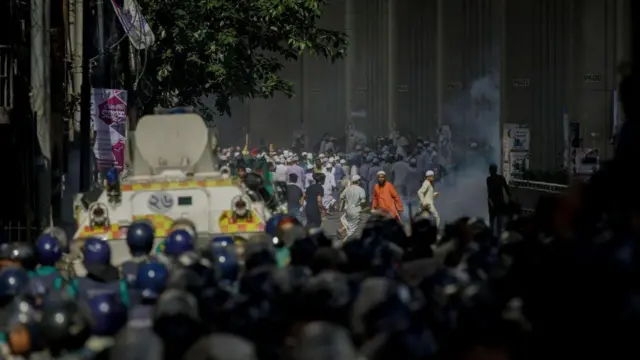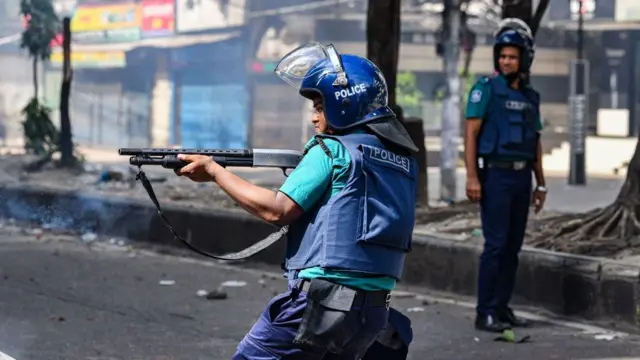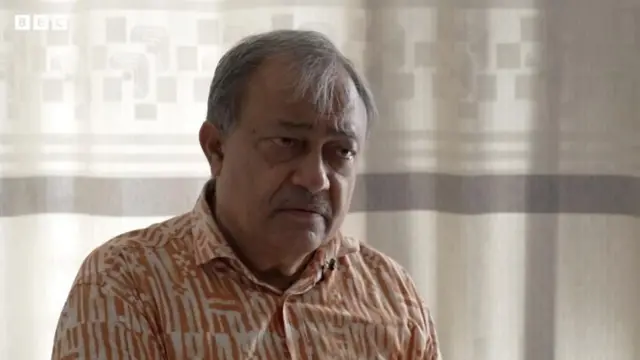Asif Nazrul, advisor to the Ministry of Law, Justice and Parliamentary Affairs, has described the killings that took place in Bangladesh in the months of July and August, first centered on the quota and then the movement to overthrow the government, as ‘July genocide’.
At least 650 people were killed during this time, the United Nations said.
Meanwhile, Brigadier General (retired) M Sakhawat Hossain, former Home Affairs Advisor and currently Advisor to the Ministry of Textiles and Jute, commented in an interview given to the Indian media that more than 1,000 people died in the student movement.
At this time, different numbers are being presented in different media of Bangladesh regarding the number of victims.
In Motadag, there are many talks about the number of people killed in the movement, but the actual number is still unclear.
What is the way to know the number of victims?
Human rights activists say there is no alternative to creating a list to know the number of victims. At the same time, it is necessary to list the victims to bring the culprits to justice.
How many people died in the movement?
A preliminary report from the Office of the United Nations High Commissioner for Human Rights was released last Friday on the recent protests and unrest in Bangladesh.
The report states that at least 650 people died between July 16 and August 11, based on information published in various media.
It is said that among them, around 400 died till August 4 and the remaining 250 died in the next two days.
It also mentions that 32 children have died in the movement since June.
On the same day, Brigadier General (retired) M Sakhawat Hossain told the Indian online media Northeast News that thousands of people died during this time.
He said, “In parts of Dhaka and other districts, the police forces of former Prime Minister Sheikh Hasina hit and shot people with lethal weapons, most of whom were students and youths.”
After the formation of the interim government, he was in charge of the Ministry of Home Affairs. Later he was removed from the Ministry of Home Affairs and given the responsibility of the Ministry of Textiles and Jute.

What the anti-discrimination student movement says
Although no specific list was given, the number of dead in the conflict could be at least one to one and a half thousand, according to Umama Fatema, the coordinator of the anti-discrimination student movement.
“At first I thought it would be at least 500. But the data from the hospital, hearing people’s mouths, it now seems that it will not be below one to one and a half thousand by any means. Especially on the day Sheikh Hasina resigned, more than 200/250 bodies fell on that day,” he said.
Earlier, the anti-discrimination student movement had revealed the death of 266 people across the country from July 16 to 25 during the quota movement.
Miz Fatema said that no work has been started to make a new list of the dead.
According to this coordinator, the death of many of the victims has been recorded as ‘heart attack, stroke, road accident, and many bodies have been kept in the morgue or buried as disinherited.

image source,Getty Images
As a result, the nationwide search lists ‘a huge responsibility’ for the anti-discrimination student movement.
And therefore, he thinks it is important to appoint government people to make a list of martyrs.
“We are saying from our place that the government should take the initiative. It is very important to form a team under the interim government to identify the number of martyrs,” said Miz Fatema.
Meanwhile, Asif Nazrul, adviser to the Ministry of Law, Justice and Parliamentary Affairs told the media that those involved in the murder will be tried according to the International Criminal Tribunal Act 1973.
However, no initiative has been taken by the government regarding how many people have been killed or injured in this movement.
BBC Bengal tried to contact several advisers to find out whether the current government has any plans in this regard, but they did not receive any comments.
Is it possible to know the actual number?
Many of those who died during the movement were not registered in the hospital. Again, the relatives took away the bodies of many without post mortem. The police stations also do not have the actual number of dead.
In such a context only documented information is being published. In that case, human rights activist Noor Khan Liton thinks that there is little chance of getting the actual number of dead.
“In the beginning, people were killed like birds, most of the weapons used in the battlefield were used, and the number of dead and wounded was so high that the hospitals could not cope”.
“In many cases, the relatives have left with the bodies, while the law and order forces have made some bodies disappear. Many are still unidentified”, he said.
There are also floating communities in Dhaka. It will take time to identify them. As a result, any number published may not be correct, this human rights activist thinks.
And so in such an event, he said, “We should wait for some time and try to figure out the actual number instead of talking about assumptions.”

Why is it important to list the victims?
Human rights activist Noor Khan Liton believes there is a need to have a list of the victims ‘for justice, for the need for history and to stand by the families’.
In other words, he thinks it is important to know about the victims if he wants to prosecute crimes against humanity and genocide.
“Secondly, information needs to be preserved for historical purposes. There has been so much brutality here, we need to know how many people were killed in a planned manner”, said this human rights activist.
And even if he stands by the families of the victims, he thinks that this list will be needed.
In that case, after the start of work, it takes about one and a half months. Lytton.
What can be done to know the actual number?
Noor Khan Liton feels that the government can ask the public for information to know the actual number of victims.
He said, “Those who have gone missing or their relatives cannot be found during this period should contact the government – such a notice should be issued and advertised by the government.”
However, even if the advertisement is given, it cannot reach many people. According to Mr. of Lytton.
“We have the network. The work of development organizations or NGOs is spread all over Bangladesh like a net. If everyone can be used as soon as possible, then it is possible to get real information”, he said.
However, this human rights activist thinks that even after listing, there is a possibility that some numbers will be left out.